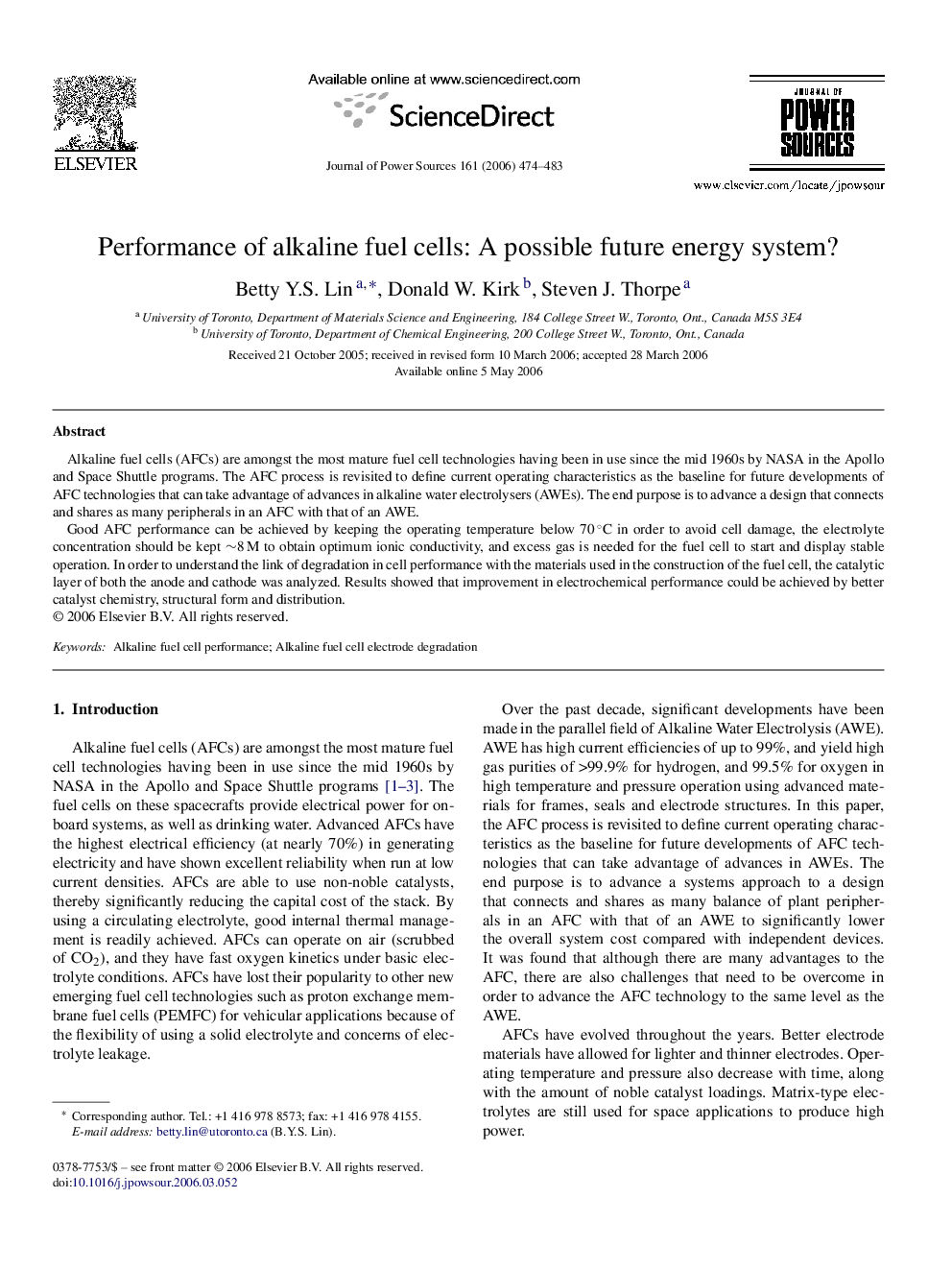| کد مقاله | کد نشریه | سال انتشار | مقاله انگلیسی | نسخه تمام متن |
|---|---|---|---|---|
| 1287021 | 973209 | 2006 | 10 صفحه PDF | دانلود رایگان |

Alkaline fuel cells (AFCs) are amongst the most mature fuel cell technologies having been in use since the mid 1960s by NASA in the Apollo and Space Shuttle programs. The AFC process is revisited to define current operating characteristics as the baseline for future developments of AFC technologies that can take advantage of advances in alkaline water electrolysers (AWEs). The end purpose is to advance a design that connects and shares as many peripherals in an AFC with that of an AWE.Good AFC performance can be achieved by keeping the operating temperature below 70 °C in order to avoid cell damage, the electrolyte concentration should be kept ∼8 M to obtain optimum ionic conductivity, and excess gas is needed for the fuel cell to start and display stable operation. In order to understand the link of degradation in cell performance with the materials used in the construction of the fuel cell, the catalytic layer of both the anode and cathode was analyzed. Results showed that improvement in electrochemical performance could be achieved by better catalyst chemistry, structural form and distribution.
Journal: Journal of Power Sources - Volume 161, Issue 1, 20 October 2006, Pages 474–483